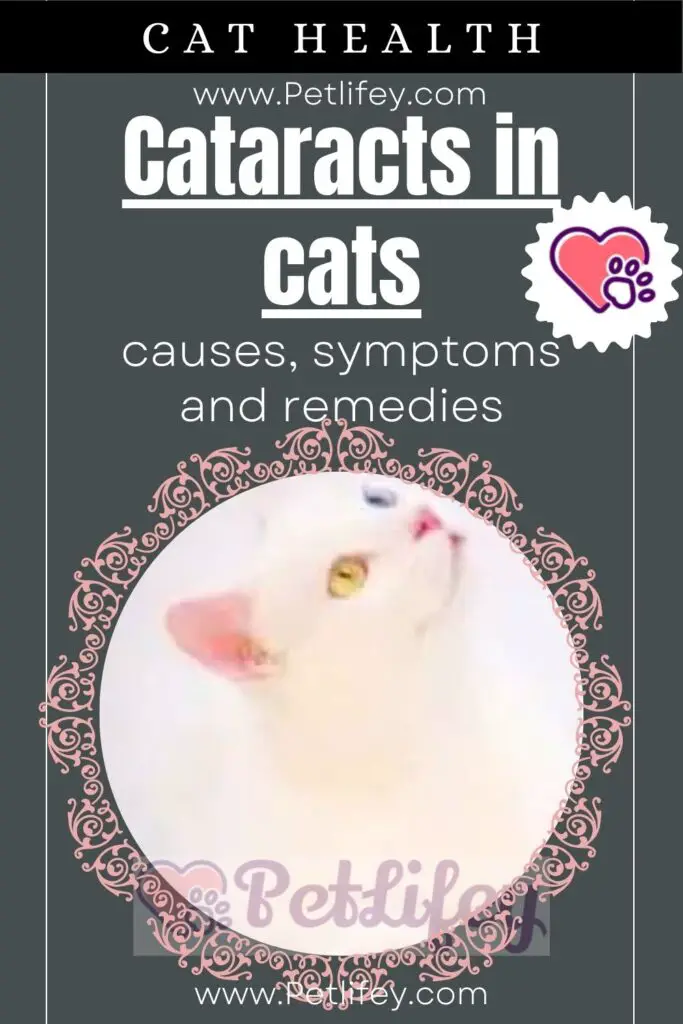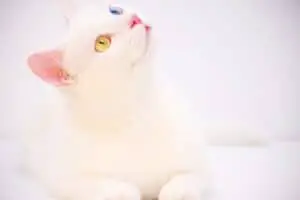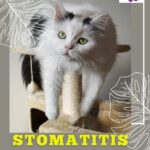
Does your cat have eye discomfort? Find out all the signs of cataracts in cats and how to treat them effectively and definitively.
Just like his human, our cat can also suffer from annoying eye problems. The most common sign is excessive tearing, but what else tells us that the cat is suffering from cataracts? It is important to notice telltale signs right away to prevent the problem from worsening and seriously endangering your eyesight. Although this is an insidious problem, it is also very common. So it is important to know the causes, check the symptoms and adopt the most effective remedy as soon as possible.
Cataract in cats: what it is
Since the article does not aim to be a scientific treatise, we will try to explain this ocular pathology in fairly basic terms. It is an alteration and a loss of transparency of the crystalline or intraocular lens. This ‘dysfunction’ causes a worsening of vision and serious difficulties in looking even at short distances. The disease is progressive and could even lead to absolute blindness if not recognized and treated in due time.
The cat will immediately show discomfort but the vision problems will begin at an advanced stage, not in the early days. It is essential that an owner quickly recognize the symptoms and remain calm in order to act better and quickly. But how to understand the signals that the cat sends us when he is sick?
Symptoms
Being an irritating and painful eye disease, the cat may complain. Let’s look at his pupils: they could have a bluish-gray color, as if it were a kind of speck. This pupil opacity may remain small or increase as the disease progresses. In the worst cases it could even cover the entire pupil, causing the cat to become blind. But in addition to scrupulously observing his eyes and, of course, having him examined by the vet, there are other important symptoms to note, namely:
- difficulty walking,
- difficulty calculating distances,
- do not recognize objects and people,
- excessive tearing,
- change in eye color,
- change in pupil size,
- cloudy or clear nasal discharge (actually produced by eye infection).
Let’s not blame ourselves for thinking that we did something wrong that caused cataracts: many of its forms are congenital and manifest themselves clearly only when they have reached a certain stage of severity.
The causes
In reality, there is very little to say about the reasons that cause cataracts in cats. In fact, these are often congenital causes, which can provoke it in only one of the eyes or in both. It could also be a hereditary cataract, therefore ‘coming’ from the parents or metabolic: let’s take the case of diabetes in cats, which has cataracts among its symptoms. A trauma could be at the root of this ocular problem or the result of an inflammation of the eye, a poisoning or simply the inexorable advance of age.
Cataracts in cats also have different degrees of maturation: from immature, that is an almost imperceptible transparency, to mature with a very evident transparency, up to the hyper-mature stage, or when the lens is completely opaque.
Cataract in cats: how to treat it

After noticing the signs and providing the expert with all the elements useful to formulate a diagnosis, our task will surely be to follow the instructions prescribed by the veterinarian. The earlier the diagnosis, the better the chances of recovery. It should also be said that in kitten cats, cataracts could resolve spontaneously, without external intervention. Our duties may include using anti-inflammatory eye drops. In the most serious cases, on the other hand, it will be necessary to intervene surgically with the replacement of the crystalline lens with a lens.
This is a very expensive operation, and many owners cannot afford it. So the cat will be forced to do without sight, compensating for it with smell and other senses. Furthermore, it is not certain that all cats can undergo the operation: a lot depends on the general health of the feline subject. For example, if the cataract is already at a hypermature stage, or if you are in the presence of uveitis in the cat and increased ocular pressure, surgery is absolutely not recommended.
There is no single answer to the effectiveness or otherwise of the intervention, as it depends on a series of factors including the general state of health, age and also whether or not post-operative therapies are respected. In fact, the evolution or resolution of the disease also depends on the respect of a balanced diet and the use of food supplements. Although the risk factor always remains at a rate of 5%, up to now surgery is the only means able to solve the problem.
After the intervention, the cat will have to observe a long period of rest at home and continue to be subjected to periodic visits.






